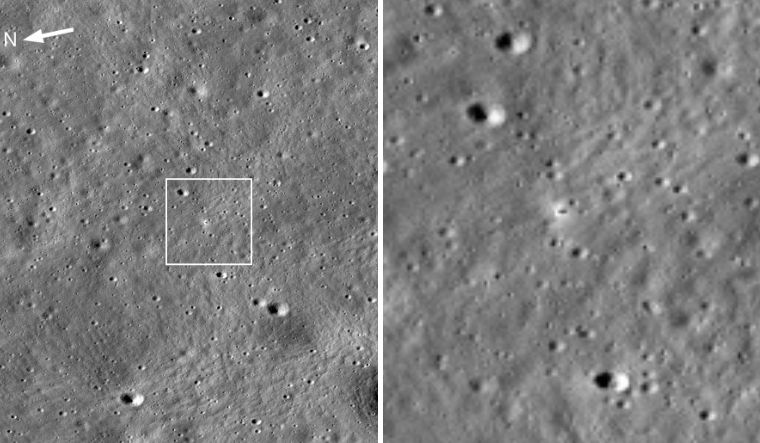NASA has shared the photos of Chandrayaan-3's landing site on the lunar surface captured by its Lunar Reconnaissance Orbiter (LRO), which is managed by Goddard Space Flight Center in Maryland, the USA.
The LRO camera, managed and operated by Arizona State University, captured an oblique view (42-degree slew angle) of the lander four days after Chandrayaan-3 soft-landed on the moon, according to NASA. The Chandrayaan-3 landing site is located about 600 kilometre from the moon’s south pole.
The bright halo around the vehicle seen in the image is a result of the rocket plume's interaction with the fine-grained regolith (lunar soil).
LRO, which was launched by NASA on June 18, 2009, has collected “a treasure trove of data” with its seven powerful instruments, just like the payloads of Chandrayaan-3's propulsion module, Vikram lander and Pragyan rover.
Chandrayaan-3 lander is in the center of the image, its dark shadow is visible against the bright halo surrounding the vehicle.
The photos were released hours after ISRO released an anaglyph created using Pragyan rover's NavCam Stereo Images, which consist of a left image positioned in the red channel and a right image placed in the blue and green channels to create a cyan output. For the unversed, an anaglyph is a simple visualization of the object or terrain in three dimensions from stereo or multi-view images.
“The difference in perspective between these two images results in the stereo effect, which gives the visual impression of three dimensions,” stated ISRO. The space agency says red and cyan glasses are recommended for viewing in 3D NavCam developed by ISRO's Laboratory For Electro Optics Systems (LEOS), Bengaluru.


